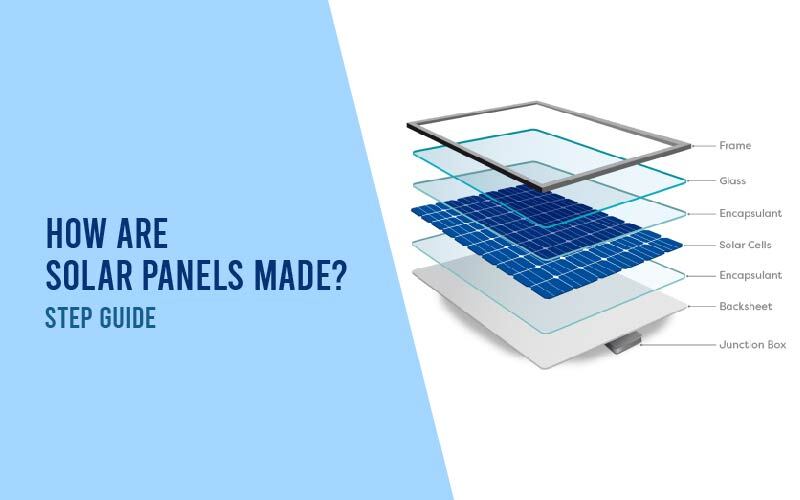For many, when they think about the sand and the sun, they picture themselves enjoying at a beach in Goa while they sip on the coconut water and admire the setting sun. But the solar industry; it sees the sand as a raw material for making solar panels that generate much-needed electricity.
Well, you heard it right, solar panels are made of the sand.
But how?
This post here is a step-guide for understanding how solar panels are made and generate electricity using the sunlight. So, without ado, let’s see the step;
Step 1: Extracting the Raw Material
It all starts with extracting the main material needed for solar panels, which is silicon. It is found in sand and is the second most abundant element on Earth. The quarry or the big rock of sand called as quartz is collected and purified to extract silicon. The solid rocks of silicon are melted in a big furnace at extremely high temperatures. The temperature of the furnace reaches up to 2000℃ which turns the solid silicon into its liquid state.
Step 2: Doping and Purification
The molten silicon is then cooled in the big furnace with water conditioning. These are then doped with Boron or other chemicals to make them more conductive. The molten solution is then cooked for hours. While keeping a check on any kind of contamination, molten silicon is then let to cool down in a cylindrical container.
Step 3: Cutting into Wafers
Solid cylindrical silicon is then cut into thin wafers which are extremely fragile. Cutting of solar panels into thin sheets is not like cutting a cake.; it requires high precision. Diamonds are used to carry out the slicing process. Further, as silicon is shiny, it reflects the sunlight, an anti-reflective coating is put on the silicon wafer to pacify the reflection.
Step 4: Penultimate Process: Making Solar Cells
These wafers are then again treated with conductors such as phosphorous to form a thin layer. Thin combination of boron-doped silicon thin and phosphorous sheet makes a p-n junction which is needed to harness the solar energy. These thin sheets are then again cut into small square-shaped cells known as solar cells.
Two types of solar cells are available in the industry; monocrystalline and polycrystalline. While monocrystalline solar cells are made with only a single silicon crystal, polycrystalline cells are made by fusing many crystals.
Step 5: Making the Final Product
The solar cells are then soldered together, using metal connectors. The integration of solar cells gives sola panel its matrix-like structure. After the cells are put together, a thin layer (about 6-7 mm) of glass is added on the front side, facing the sun and on the backside, a sheet of highly durable, polymer-based material is fixed. The layer prevents water, soil, and other materials from entering the panel from the back. Subsequently, the junction box is added, in order to enable connections inside the module.
After that, the frame is assembled which provides protection against impact and weather. The use of a frame will also allow the mounting of the panel in a variety of ways, for example with mounting clamps. EVA (ethylene vinyl acetate) is the glue that binds everything together.
Step 6: Quality Check and Test
The last process before packing solar panel is quality check and testing which is carried out to ensure the cells perform as expected. STC (Standard Test Conditions) is used as a reference point. The panel is put in a flash tester at the manufacturing facility. Electrical parameters are written down and you can find these results on the technical specification sheet of every panel. The ratings will reveal the power output, efficiency, voltage, current, impact and temperature tolerance. Cleaning and inspection are the final steps of the production before the module is ready to be shipped to homes or businesses.
R&D in the solar energy industry has been continuously going on aimed at reducing the cost of solar panels and increasing efficiency. The solar panel manufacturing industry is becoming more competitive and is forecasted to become more popular than conventional sources.
Do give our blog a read for all your solar-related questions. You can also check out other interesting updates on solar on our Facebook page (facebook.com/zunroof)
Reach out to us by filling the form below:

